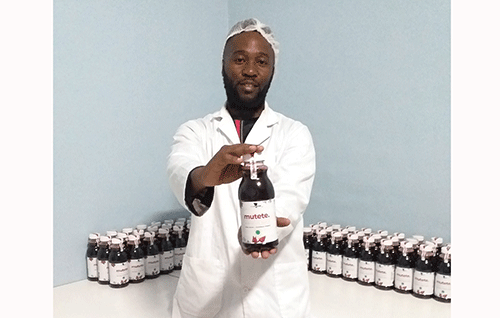The founder of the locally-made Mutete Juice is encouraging more Namibian farmers to tap into producing various mutete extracted products, saying it is one of the most highly promising and unexploited areas of agroprocessing.
Mutete, scientifically known as Hibiscus sabdariffa (also known as Roselle), is the raw product used in manufacturing the juice.
Fredrick Shipipa, the managing director of Mutete Juice parent company, MYM Trading CC, says there is a market for those producing mutete, as both the vegetable and the flower are in demand and sourced by local food, tea and beverage producers like himself.
However, Shipipa noted there is often a shortage of supply, specifically for the mutete flower, well-known as calyces.
Because of the recurring shortage, he has now become one of the voices of local food producers, advocating for more farmers to become mutete producers.
“Sometimes there is a shortage in our production process, but Namibia offers a conducive environment for mutete to thrive. In February, there was a shortage of dried calyces, and we had to import 100kg of calyces from Zimbabwean farmers,” shares Shipipa, adding that his company is ready to offer training to new and old mutete growers.
While he aims to empower all farmers, including subsistence farmers, by paying them whatever quantities of mutete they sell to their company MYM Trading, there is also an element of food sufficiency and stability for the entire value chain.
The company, which employs more than 10 Namibians, boasts personnel who are qualified food scientists and quality experts.
Mutete juice is currently sold in about 15 supermarkets in Namibia, and more shops are scheduled to be stocked with the product as demand for the healthy juice is increasing. The locally-made product contains no preservatives, nor does it have any additives.
Adding to Shipipa’s sentiments on the mutete scarcity, Kavango-based hibiscus farmer Theophilus Hamukoto said he too runs out of the crop at times, and also encouraged more growers in the market to enter the space.
“People in remote areas don’t want to share their mahangu fields with mutete plants. Farmers need to embrace change and diversify. One can plant mahangu on this side and mutete on the other side. The buyers are there,” he said.
Hamukoto has been supplying mutete to various manufacturers, including MYM Trading, for the past three years.
The hibiscus crop belongs to the Malvaceae sub-group. It inhabits forests and thickets in the Khomas region, as well as in the areas of Opuwo, Oshakati, Etosha National Park and some areas of the north Kalahari Desert. The plant consists of bright sunny-yellow flowers that have red to blackish centres on a background of large velvety or hairy leaves.
Also, the fact that the flowers are cooked and eaten by locals, particularly in the Okavango Delta, adds another unique aspect to the plant.
Mutete has also been used to make jam and tea products; thus, the need to plant it more widely in Namibia is encouraged to avoid a shortage by food manufacturers such as Mutete Juice Makers.
Because mutete plants require lots of sunshine, moderate watering and are frost-hardy, it is not complicated for locals to farm them in large quantities as Namibia has plenty of sunshine and the moderate watering requirement allows even those with limited water supply to have the ability to plant them.
The mutete crop has traditionally earned its reputation amongst rural African populations, as the leaves of the plant are eaten as wild spinach.
Independent studies have shown that antioxidants in the hibiscus plant have anti-inflammatory and anti-cancer properties. Additionally, hibiscus tea has promising potential health benefits such as lowering your blood pressure, stabilising blood sugar and reducing blood lipid levels.


